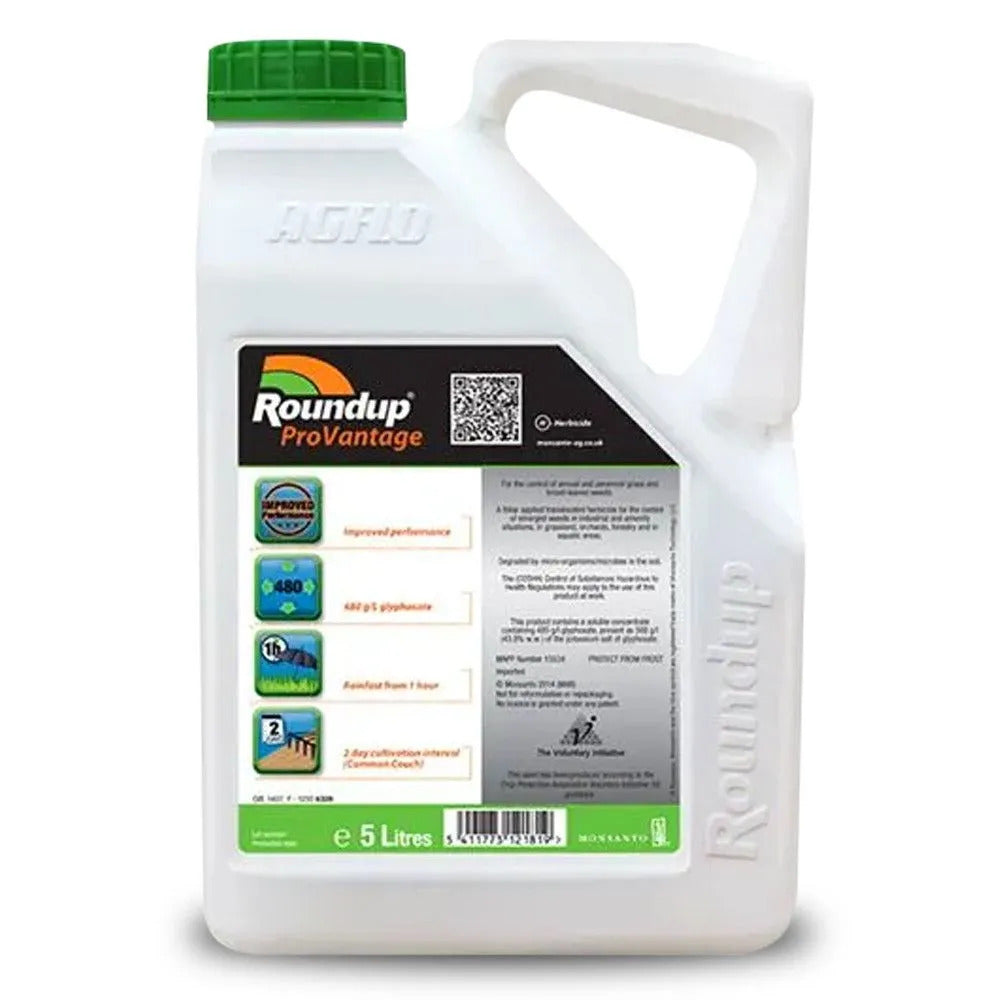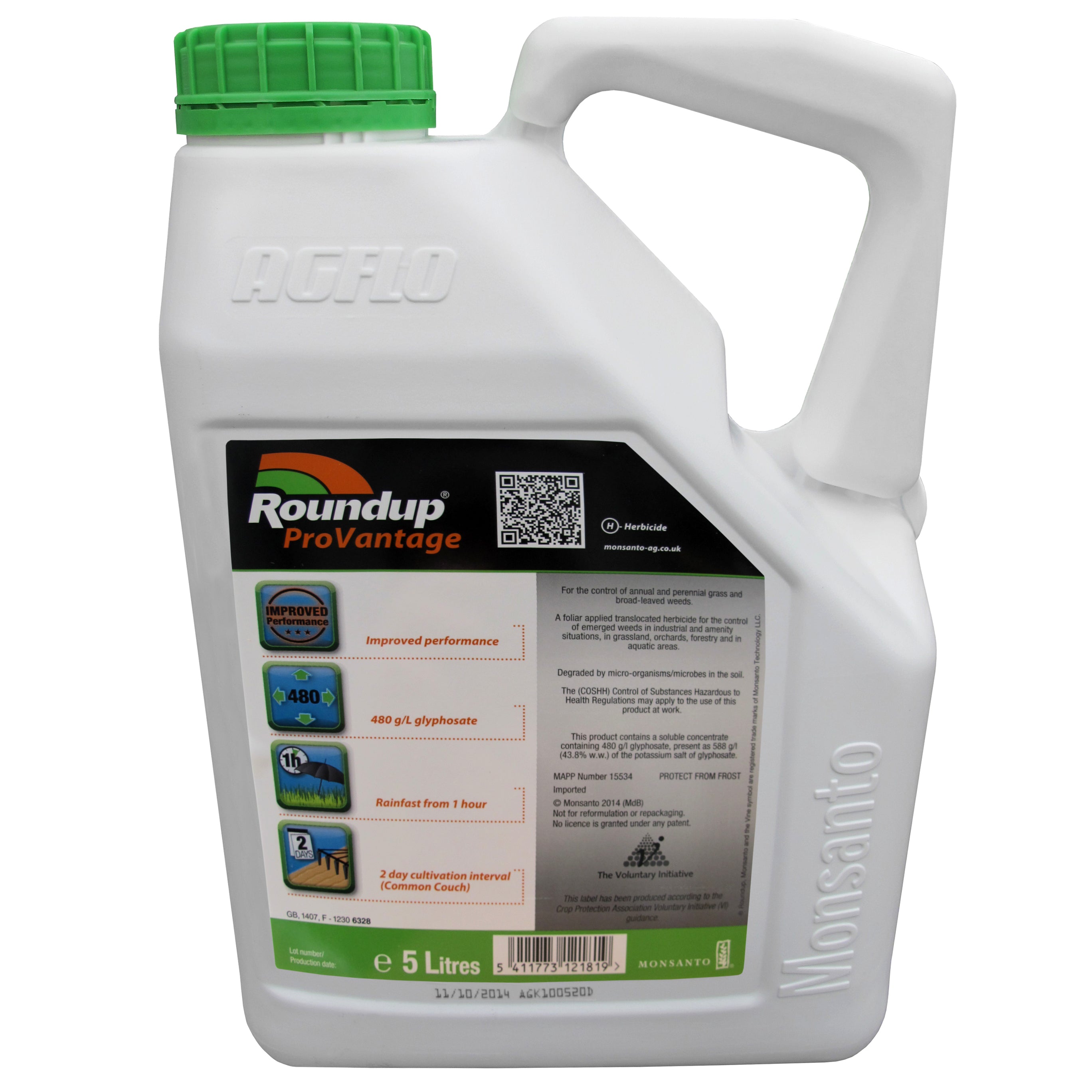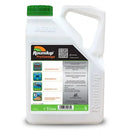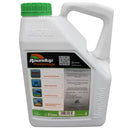Description
| Product Overview | |
|---|---|
| Product Type | Herbicide |
| Product Name | Roundup ProVantage |
| MAPP No. | 15534 |
| Active Substances | 480g/l Glyphosate |
| Formulation | Soluble concentrate |
| Areas of Use | Annual and perennial grasses and most broad-leaved weeds |
| Amateur/Professional | Professional |
Roundup ProVantage is a patented potassium salt formulation containing 480g/L glyphosate and a unique blend of two surfactants. The optimised blend of surfactants delivers highly efficient activity at the leaf surface and a synergistic improvement in glyphosate uptake and overall performance.
Roundup ProVantage incorporates a high technical specification and the formulation has been designed to address stewardship aspects, so vital now for glyphosate application.
How Roundup ProVantage works
Roundup ProVantage is a herbicide which is sprayed on to green leaves where it is absorbed and drawn into the plant's vascular system. It then stops the production of the amino acids which build the protein the plant needs to grow and survive. The plant effectively starves to death.
|
|
|
|
|
|
|
|
 Improved hard water efficacy
|
Controls Heavyweight Weeds
Application Information
Application Rates of Roundup ProVantage 5L
| Rates per hectare | Dilution for 200l/ha water volume | Weeds controlled |
|---|---|---|
| 2.25 Litres | 1:87 or 12 ml per litre of water | Annual grasses, annual broad-leaved weeds |
| 3.0 Litres | 1:67 or 15 ml per litre of water | Arable weeds pre-planting of trees |
| 3.75 Litres | 1:53 or 19 ml per litre of water | Most perennial weeds |
| 4.5 Litres | 1:44 or 23 ml per litre of water | Floating aquatic weeds |
| 7.5 Litres | 1:27 or 37 ml per litre of water | Rhododendron, Ivy Horsetail and difficult waxy-leaved plants |
When to Apply Roundup ProVantage 5L
| Application Window | |||||||||||
|---|---|---|---|---|---|---|---|---|---|---|---|
| Jan | Feb | Mar | Apr | May | Jun | Jul | Aug | Sep | Oct | Nov | Dec |
Timing
The timetable needs to be flexible according to conditions rather than calendar. The first spray should not be done until weeds have emerged and are actively growing and this will vary from year to year according to the weather.

The graph shows spray windows as late April to mid-May for Spring treatment, with a subsequent optional spray in Summer, and a further spray in the period August to September.
Monitoring the Results
Inspection and evaluation is essential to assess the performance and check if you need follow-up treatments. Weeds sprayed with Roundup ProVantage do not show signs of die-back until 7-10 days have elapsed. It is important to be able to recognise early symptoms, so that treated weeds can be identified. Symptoms show first in Annual Meadow-grass, which takes on a yellow tinge a few days after spraying. Other grasses follow by turning first yellow, then reddish brown before they die.
Broad-leaved weeds will appear healthy at this time, however, if you look closely you will see the leaves will be turning white in the centre. Within a week the plant will be dead. Use this guide to monitor the progress and effect of the treatment. You should expect 95% kill of all weeds to occur with the 3.75 litre rate, approximately 10 - 21 days after treatment. Any seedlings that germinate after spraying will NOT be affected.
For the professional control of Japanese Knotweed - Stem Injection Equipment
FAQs
For further information on Roundup ProVantage 480 5L, please speak to a member of our technical sales team on 01952 641949.
Technical Information
| SKU | Product | File |
|---|---|---|
| 121564 | Roundup ProVantage 480 5L | Product Label (PDF) |
| 121564 | Roundup ProVantage 480 5L | Product Brochure (PDF) |
| 121564 | Roundup ProVantage 480 5L | Safety Data Sheet (PDF) |
Delivery & Returns
Any applicable delivery charges will be calculated at checkout. Certain products qualify for next working day delivery if ordered before 1pm, excluding bank holidays and the festive season. Please be aware that deliveries to remote areas, including the Highlands and Cornwall, may take longer. Additional charges apply for non-mainland locations — please contact the office for further details, or you can learn more about our delivery options here.
A signature is required upon delivery. If no one is available, you can leave a signed note for the driver requesting the parcel be left in a secure location without a signature. However, please be aware that this is done at your own risk and is subject to the driver's discretion.
For large orders, please be aware that if you require a smaller 7.5 tonne lorry, the maximum weight for pallets is 750kg - otherwise the standard pallet size limit of 1000kg applies.
Please note:
- For deliveries that require a pallet, the pallet/packaging itself is the customer's responsibility and will not be uplifted or taken upon delivery.
- Deliveries are kerb side only.
- It is possible a pallet order can be delivered on a vehicle up to the size of a 26T lorry.
If you have any access restrictions for lorries or large vehicles, please speak to our sales team on 01952 641949.
Collection from our Telford, Shropshire, Trade Counter is available for this product.
Safe use of pesticides
The purchaser and/or end users are responsible for ensuring that these products are used in line with industry Approved Codes of Practice. All operators must be trained and certificated in using and applying any Ministry Approved professional product.
Please be aware that by proceeding you are purchasing a professional pesticide product.
You must ensure the end user of these products complies with the DEFRA/HSE Code for the Safe use of Pesticides:
"By law, everyone who uses pesticides professionally must have received adequate training in using pesticides safely and be skilled in the job they are carrying out."













